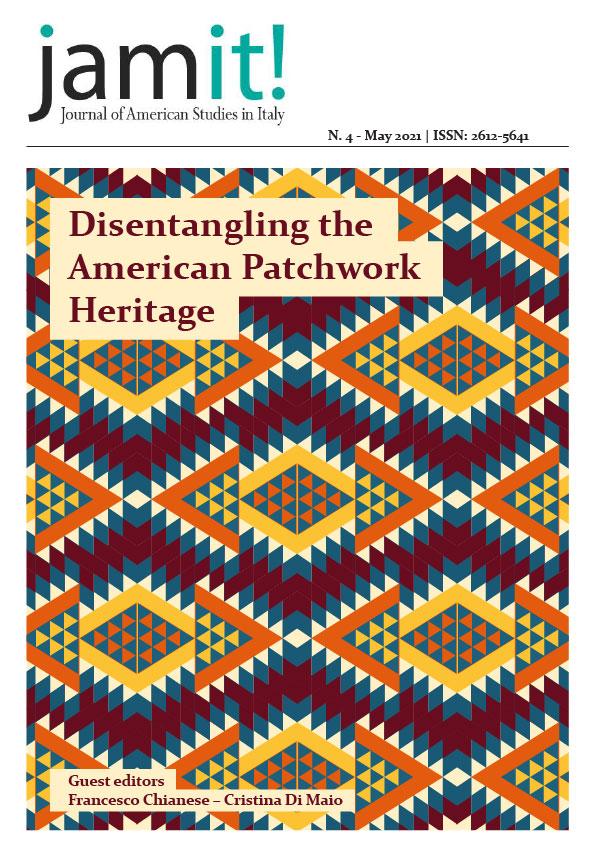Gentefied and the Representation of the Gentrification Related Latinx Conflicts
DOI:
https://doi.org/10.13135/2612-5641/5277Palabras clave:
gentrification, tv series, chicanx, spatial justiceResumen
On February 21, 2020 Netflix launched Gentefied, a 10-episode long, fast-paced series revolving around a Mexican American family living in the LA neighborhood of Boyle Heights, showing their efforts to cope with daily needs, economic problems, and life dreams. Aside from its slice-of-life value, the series tackles a rather complex issue that has been raising a variety of conflicts among the inhabitants of areas historically populated by minorities: gentrification has been progressively changing the shape and quintessential nature of neighborhoods, increasing their economic value by renovating buildings and businesses in order to attract a more affluent population.
“Pop” Casimiro (played by versatile Mexican actor Joaquín Cosío) and his three grandchildren Erik (J.J. Soria), Chris (Carlos Santos), and Ana (Karrie Martin) orbit around their beloved family-run taco shop. Through the articulation of the cousins’ relationships and networks, the series reconstructs the fundamental issues related with the neighborhood community internal conflicts generated by gentrification processes and, more in general, the assimilation processes imposed within a monoglossic national state. Erik is presented as a loyal, little educated yet book-loving, heavily tattooed, machista young man with an estranged pregnant girlfriend, ticking—and at the same time, challenging—most of the stereotyped features of a cholo. His conflict with Chris—who wishes to become a chef in fine dining restaurants—is pervasive and juxtaposes the clashing realities of a small family-run business and the luxury industry. Both within the family and the workplace, Chris is mocked and discriminated for his lighter skin tone and alleged guilt of betraying his own roots; nonetheless, he gets fired—and consequently ostracized by the industry—for directly confronting his employer about his racist attitudes. Ana embraces her ethnicity and sexuality, but as a struggling artist she ends up “selling out” too; her conflicts with Afro-Latina activist girlfriend Yessika (Julissa Calderon) embody the dilemmas faced by many Latinx to achieve career goals without being exploited by affluent, overbearing White agents. As their grandfather struggles to maintain the shop afloat, the family tries to unite efforts to avoid its closure while pursuing their dreams; yet, both their dreams and intents of transforming the shop to attract new clients will clash with the struggle to preserve the neighborhood from gentrification. Caught between her own affections and the principles she stands for, a distraught Yessika will lead a protest against the shop’s new activities.
Without taking a defined position on the conflicts, the series succeeds in conveying the complexity of the internal, intersectional conflicts and—in fact—the impossibility of leaning starkly on one side or the other. It also effectively stages the underlying sociocultural and economic contexts in which—even without the intervention of gentrifying agency—a reconfiguration would have been inevitable for the neighborhood to adapt to current times and thrive, overcoming marginalization. Supported by a study of the mechanisms intrinsic to gentrification processes in the Latinx neighborhood, this paper will analyze them through their representation offered by Gentefied, pointing out its intrinsic values as well as fiction-related simplifications.
Descargas
Publicado
Número
Sección
Licencia
Authors who publish with this journal agree to the following terms:
- Authors retain the copyright and full publishing rights for their submissions to the journal.
- Authors grant the journal right of first publication with the work simultaneously licensed under a Creative Commons Attribution-NonCommercial-NoDerivatives 4.0 International License that allows others to share unedited work for non-commercial purposes with an acknowledgement of the work's authorship and initial publication in this journal.
- Authors are able to enter into separate, additional contractual arrangements for the non-exclusive distribution of the journal's published version of the work (e.g., post it to an institutional repository or publish it in a book), with an acknowledgement of its initial publication in this journal.
- Authors are permitted and encouraged to post their work online (e.g., in institutional repositories or on their website) prior to and during the submission process, as it can lead to productive exchanges, as well as earlier and greater citation of published work (See The Effect of Open Access).




